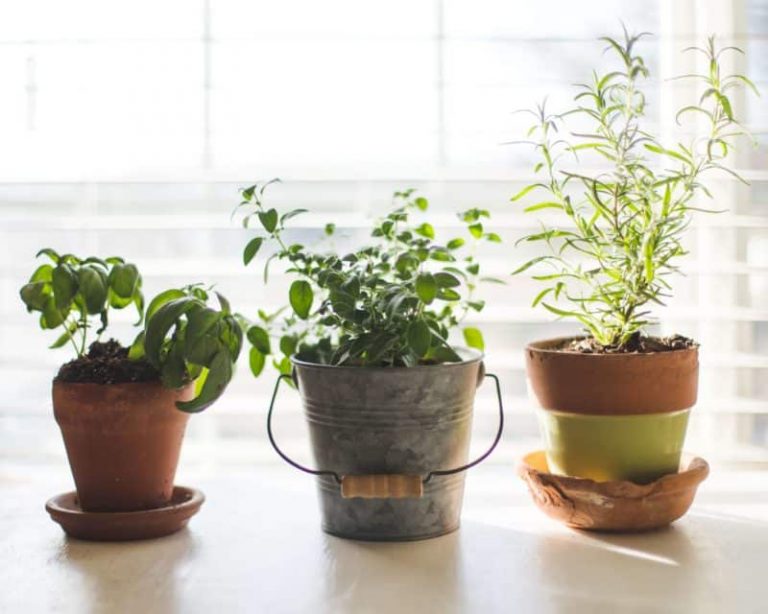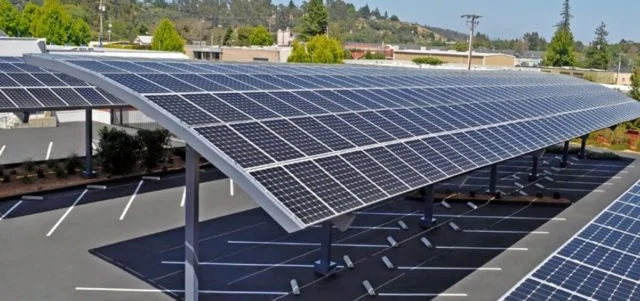In a 2021 survey, a staggering 65% of Americans said they had attempted to grow their own produce at home. With Americans losing roughly $371 a year on food waste, this move to at-home gardening is no surprise.
It’s clear that many homeowners are interested in growing their own food at home, whether to save money, know what’s going into their food, or live more sustainably. However, one unique farming method is making waves as highly-efficient and sustainable: vertical farming at home.
This innovative technique allows homeowners to enjoy their own fresh produce, plants, or herbs with limited space. Let’s dive into how it works, and how you can maintain your own vertical system at home.
What is vertical farming?
Vertical farming is a unique method of growing plants or crops in vertically stacked layers. Plants stretch up vertically on racks, walls, or different materials, rather than traditional farming methods.
With this method, it’s possible to grow more than one plant simultaneously without taking up much space – the multiple layers of plants allow for more crops per square foot than on just one level.

There are a few popular growing methods for vertical farming, including the use of soil, aeroponic, or hydroponic practices. However, the basics of vertical farming remain the same while utilizing each of these methods.
This farming technique is perfect for homeowners who have limited space – in urban areas, for example – or for homes and businesses that don’t have a large, flat plot of land to utilize.
Domestic vertical farming
Vertical farming is gaining popularity on large-scale farms, where plants are typically grown indoors in a climate-controlled environment. Newark, New Jersey, is home to the world’s largest industrial vertical farm, run by AeroFarms.
In an urban environment like Newark, where there is less space to practice conventional farming methods, AeroFarms is able to produce a large number of crops in their facilities.
However, the industrial vertical farming market is still developing and perfecting their process. If you’re looking to grow your own crops at home, vertical farming is a great way to do so.
There are a few differences between industrial and domestic vertical farms – namely, the materials and facilities used. If you’re looking to grow your own crops at home, you may not have access to the same high-tech technologies that industrial farms like AeroFarms use every day.
However, sophisticated technology isn’t always necessary when crafting your own vertical farm at home!
Of course, it is essential to know the potential costs of constructing and maintaining your own vertical farm at home. You will need the right materials to build the structure and maintain the system.
How to start vertical farming at home
So, you’d like to begin vertical farming at home. There are a few different options to consider, depending on your price point and space you have available.
There are many at-home kits available today which are equipped with special temperature, light, and water settings. Tower gardens built from PVC pipes are a popular option, as well as wire-rack shelving units. Hydroponic growing products are also increasing in popularity, as they allow plants to grow with little sunlight or soil.
Though there are a few different options, it’s important to understand whether your space is suitable for a vertical farm. You can start by setting up a DIY farm using materials that are available in your home – consider the following procedure.
What you need to get started with vertical farming at home
To create a DIY vertical farm at home, you can use a few simple materials. Here’s what you need to create a vertical farm on your own:
- Water bottles or other containers of equal size
- A soil and nutrient-dense mixture
- A metal or plastic wire rack to be dedicated for your vertical farm
- A bottle to utilize as a water tank – make small holes in the bottle to provide a slow but continuous supply of water
- Seeds or young plants that you want to grow
With this method, you can use regular plastic bottles or containers as pots to grow crops in. Placing these ‘pots’ on the rack, with the water tank will allow you to automate the supply of water without using electricity. Gravity will ensure your plants are steadily receiving water.

Once you’ve been successful with this kind of vertical farm at home, you may want to scale up your system and establish a fully-automated farm.
Automated vertical farms often require more upfront investment and maintenance, because they require a regular supply of electricity to maintain different lighting, climate controls, and water systems. Moreover, you must also know how to operate the vertical farm systems.
Consider your water system
Generally, vertical farming utilizes 95% less water than conventional farming, making it a more sustainable method of growing crops, particularly in areas where water shortages are frequent.
There are a few methods you can utilize to water your vertical farm at home: hydroponics, aeroponics, aquaponics, and manual watering.
Hydroponics
Hydroponics is one of the most viable methods of growing plants without soil, using a nutrient-rich solution instead.

Source: Wikimedia / Satoshi KINOKUNI
This method suspends plants above a tank of water, with its roots hanging in a container to absorb water and nutrients. This method can work both indoors and outdoors, and typically allows for faster growth and higher yields than traditional soil-based growing systems.
However, it’s important to note that the liquid must be circulated frequently to maintain an ideal composition of nutrients for the plants to thrive.
To utilize a hydroponic watering system in your vertical garden at home, you simply need your plants, a container of choice, a way to anchor the plants, nutrients, and a light source.
Aeroponics
Aeroponics builds off the principles of hydroponic systems but require no container for the plants to rest in. Aeroponics grow plants in the air, with their roots exposed, where they are periodically misted with specially-designed misting devices.
This mist is typically made up of water and nutrients for the plants, providing the necessary amount of moisture to the root so that plants can grow.
Without a doubt, aeroponics is the most advanced and efficient way of growing crops through vertical farming. They use 95% less water than plants grown in soil, and since the nutrients are held in the water, they get recycled, too.
Moreover, while growing in an aeroponics system, plants directly absorb more nutrients and minerals, making the vegetables produced through this method more fresh, tasty, and nutrient-rich.
Aquaponics
Aquaponics systems are almost identical to hydroponics, but with some additional benefits. Plants grow in a water tank like they do hydroponically, and fish are added to the tanks, creating an ecosystem where plants and fish benefit from each other.

Source: Wikimedia / Ryan Somma
Plants feed on fish waste, cleaning and purifying the water that the fish live in. The bacteria that is created in this process is also beneficial to the development of plants: they convert waste into substances that plants can use to grow.
In this method, there is no need to recycle the water frequently. A small-scale aquaponics system can provide a multitude of benefits, saving time and effort.
It’s important to note, however, that the pH balance of the water must be balanced: plants, fish, and bacteria each require a different optimal pH.
Manual watering
If you want to keep things simple, you can always stick to manually watering your vertical farm at home. This is the best option if you want to maintain your DIY farming system.

You can simply use a watering can and water the top plants in your vertical farm – the excess water will then trickle down and feed the plants below, saving water in the process.
It is important of course, to ensure that lower levels of your farm and getting sufficient water as well. The frequency with which you water each plant will depend on its unique needs, so be sure to note which plants require more or less water.
To conserve water at home, consider harvesting and reusing rainwater for your farm. This will ensure you’re saving money on water and reusing useful resources at the same time.
Choose the right lighting for your vertical farm
It’s critical to ensure that your vertical farm has the right light to thrive. Depending on where your farm is located, your lighting can differ.
If you plan to grow plants outdoors, it’s best to place your farm in an optimal spot for natural light – indirect light will ensure that your farm gets a good distribution of sunlight.
Many indoor vertical farms utilize artificial grow lights, but setting up your vertical farm in a place where natural light can still reach it is a good idea. In winter months, however, natural light can be scarce for indoor vertical farms, and artificial lights can make up for this lack.

Though there are a few different kinds of artificial grow lights, consider LED or fluorescent lights for your at-home indoor vertical farm.
LED lights are the most popular artificial lighting methods for vertical farms. LED lights are adjustable, and ensure that each plant gets the intensity of light that it needs based on its growing stage. They are typically affordable and durable, and do not overheat plants.
Fluorescent grow lights are used for growing herbs and vegetables indoors. Fluorescent tubes come in many different intensities, and often last longer and are more energy-efficient than incandescent bulbs.
Other considerations for vertical farming at home
Vertical farms can be impacted by factors other than lighting, whether indoors or outdoors. It’s important to consider these factors and how your farming system can adapt to them.
Climate controls
The humidity, temperature, and CO2 concentration in your space can impact the farming process. It can be difficult to control these factors, but they can impact your farming processes.
Purchasing a temperature and humidity control system to utilize in your indoor vertical farm can help maintain the ideal conditions for your plants.
Irrigation and fertigation
Fertigation fertilizes crops through an existing irrigation system, most often used in hydroponic systems to deliver nutrients to plants.
Depending on the water system you choose to go with for your vertical farm at home, you may consider investing in an irrigation and fertigation controller system. These systems allow you to save energy by managing the requirements of a vertical farm.
Alternatively, you can use compostable material to fertilize your system.
Given these varying factors, you may consider purchasing an at-home gardening product like AeroGarden. Their innovative and high-tech indoor farming products use hydroponic methods, and allow users to grow almost anything without soil or sunlight.
Most AeroGarden products are fully automated and allow users to control every element of farming.
What are the benefits of vertical farming at home?
All in all, there are a plethora of benefits to establishing your own vertical farm at home.
Improves crop production
One of the most important vertical farming objectives is to get maximum production by using minimum land. These farms can grow plants in almost every condition, so there is no need to wait for a specific season to grow your crops.
Less land is required
You can grow a sufficient amount of crops by utilizing less land.
Conventional farming at home often requires more land, resources, and time, greatly increasing the cost of growing crops.

Environmentally-friendly
Vertical farming utilizes less resources when compared to traditional farming – most vertical setups require a minimum amount of water, space, and fertilizers to grow your crops.
Hence, vertical farms present a more sustainable option, and help to combat various sustainability-related issues by conserving natural resources.
Immediate availability of agricultural products
Unlike conventional farming, vertical farming allows users to grow almost any crop in an urban area. In places where it is difficult to acquire certain produce, vertical farming can provide a fresh supply of foods.
Higher-quality produce
Growing lettuces or herbs in a vertical system allows for higher-quality produce than can be offered by conventional farming methods. There are no harmful pesticides required for plants to thrive in vertical farms, and controlling the growing environment ensures that produce has the right crispness, texture, and nutrient density.
Vertical farming at home may be for you
Ultimately, vertical farming at home is an innovative and sustainable method of growing plants, produce, and herbs for your entire household to enjoy.
If you’re looking to provide healthy food or plants for your home, consider a manual or automatic vertical farm setup to yield more results with minimum resources than required for contemporary agricultural practices.
Green Coast is a renewable energy and green living community focused on helping others live a better, more sustainable life.















